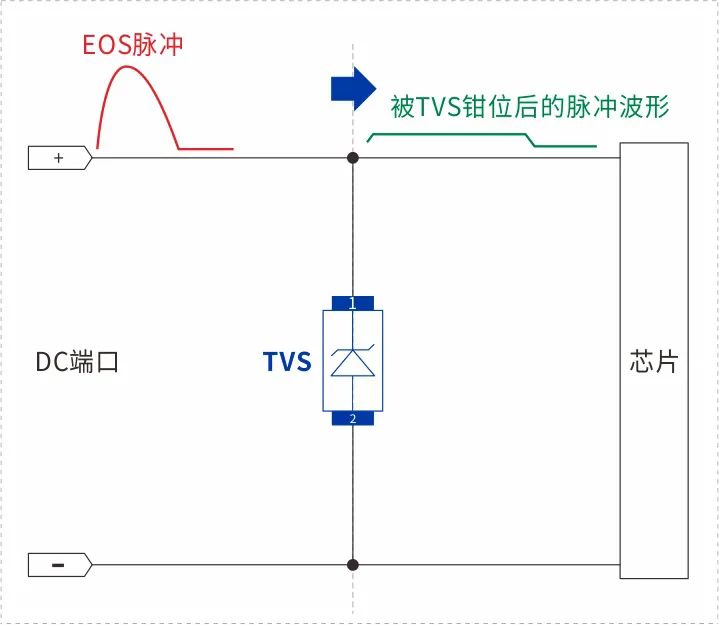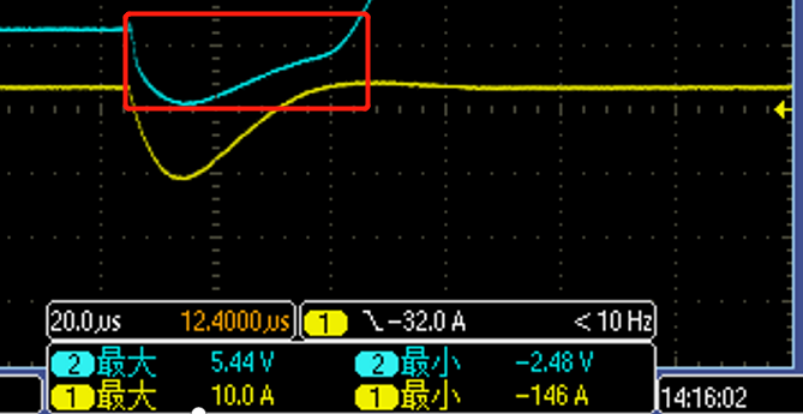How to protect EOS (Small Surge) on mobile terminals?
In the previous section, we explained the causes and hazards of EOS, and in this section, we continue to explain the EOS protection solution on mobile terminals. The specification of the charging IC indicates the voltage range, usually in order to prevent the IC from being damaged by EOS, we will add a TVS in the charging port.
here to introduce the operating principle of TVS to those who have just entered in this industry.
Take a unidirectional TVS as an example, there is usually only one PN junction, TVS work in the reverse voltage cut-off state (forward voltage is greater than 0.6V and directly conduct short circuit), in simple terms, when the EOS pulse voltage exceeds the VBR of TVS, the EOS pulse voltage will be clamped at a certain voltage range;
Complexity of speaking, semiconductor electrons in the role of obtaining an applied electric field, the impact of the surrounding atoms to stimulate new free electrons, so that more electrons in the role of the applied electric field to obtain energy, the formation of an avalanche multiplier effect, the rapid release of energy, we do not to expand here, interested partners can call to discuss.
See Figure 1 below, assuming pulse peak is above 100V, Using Bencent TVS BV-D124ZD can clamp the voltage below 30V, and use Bencent TVS BV-FE05ZA can clamp the voltage below 10V.Clamping a very high pulse voltage to a lower level which achieves the purpose of protecting the back-end IC.

If the power supply of charging port is 5V, and we suggest you to choose BV-FE07ZA with 7V operating voltage (VDRM), If the power supply of charging port is 9V-20V, we suggest you to choose BV-D124ZDwith 24V operating voltage. we know that not all chargers (or power supplies) are stable, if you choose 5V TVS for 5V charging port, it may cause the TVS to burn out after plugging into an unstable charger and conduct under DC for a long time.
In the process of serving our customers, we often have this question: TVS should be chosen unidirectional or bidirectional in the charging port?
Let\'s try to answer this question clearly. First of all, it is important to understand what is positive EOS, negative EOS, as in Figure 1 above, positive EOS is when current flows from the positive side of the circuit to the negative side, but TVS suffers a reverse (N to P) EOS shock, and negative EOS is when current flows from the negative side of the circuit to the positive side, but TVS suffers a positive (P to N) EOS shock.
Let\'s look at the waveform of an unidirectional BV-FE05ZATVS in Bencent when subjected to an EOS shock:

▲Figure 2: Positive EOS

▲Figure 3: Negative EOS
It can be seen that the BV-FE05ZAsuffered a positive EOS shock, the current up to 146A ,and the clamp voltage is 8.9V, negative EOS shock clamp voltage is only -2.48V, When subjected to a negative EOS, the TVS operates in a diode like positive conduct state, so the voltage is very low.
The P-pole of the above two BV-FE05ZAare connected in series to form a bidirectional TVS, as shown in Figure 4 below. Whether the TVS suffers from a positive or negative EOS shock, the current will always flow through N to P, so the absolute value of the clamping voltage is also around 8.9V.

▲Figure 4: P-pole series connection of BV-FE05ZA
In the charging IC manual, more people have noticed that there are several limit parameters, one of which, minimum voltage value VIN is generally only -0.3V, as follows.

It can be found:
1、When the absolute value of the negative DC voltage at the charging port exceeds 0.3V, the charging IC is prone to burn out.
2、When the negative EOS absolute value of the charging port exceeds 0.3V and lasts long enough, the charging IC is prone to burn out.
The above discussion makes it clear that TVS should be ed unidirectional at the charging port (except for anti-reverse connection) because the clamp voltage is lower in absolute value.
Seeing this, I believe that many people will have questions: even if you choose BV-FE05ZA, assuming that you suffer from negative EOS, the absolute residual voltage is 2.48V,which is significantly greater than 0.3V, how can it be effective protection?
First of all, the 0.3V in the specification refers to the DC voltage (time continuous), in addition, this issue involves the damage mechanism of the IC, we know that the internal of IC is also composed of PN, the PN junction has an internal resistance R, when the PN junction terminals have a sustained voltage U, according to the formula of electric power![]() We know that the PN junction has a current, it will heat up. However, as long as it does not exceed the operating voltage range of -0.3 to 30V indicated in the specification, IC must not be damaged. Then go back to look at Figure 2 and Figure 3 voltage waveform, assuming that the charging IC suffered negative waveform ( Figure 2 flips 180 degrees),
We know that the PN junction has a current, it will heat up. However, as long as it does not exceed the operating voltage range of -0.3 to 30V indicated in the specification, IC must not be damaged. Then go back to look at Figure 2 and Figure 3 voltage waveform, assuming that the charging IC suffered negative waveform ( Figure 2 flips 180 degrees),![]() Obviously the voltage curve in Figure 3 forms a smaller area, less heat, IC can get better protection. Figure 2 area is very large, if the IC suffered such a negative waveform is very easy to heat up and burn.
Obviously the voltage curve in Figure 3 forms a smaller area, less heat, IC can get better protection. Figure 2 area is very large, if the IC suffered such a negative waveform is very easy to heat up and burn.
Some people must still have doubts: Is it certain that the area formed by the residual 2.48V after clamping will not damage the IC? Or how many volts should the absolute negative residual voltage be below to protect the IC? Can we determine the residual pressure?
The answer is no, we know that there are many charging IC brands on the market, the technology is different, the wafer production process is different, and each EOS shock tolerance is different, so we can only provide guidance by intervening in the customer\'s product design and further provide guidance according to our experience and experimental simulation, any product needs to be tested and verified.
Some of people may still want to ask: What should I do if I still can\'t pass the test with unidirectional TVS?
Bencent Electronics has been committed to over-voltage protection for 24 years,, we have included a lot of practical cases and we are happy to share and communicate with you. Pay attention to Bencent Electronics public number and discuss over-voltage protection together.


